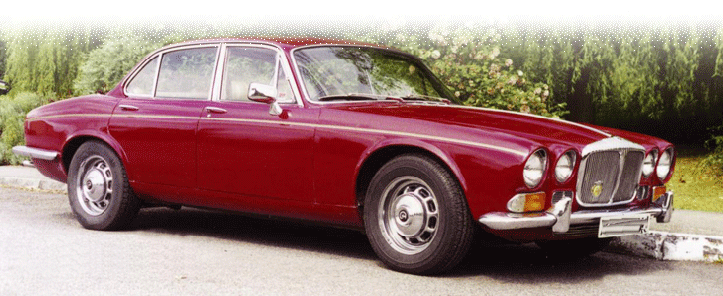Jaguar XJ6/XJ12
XJ puts the class in classic

FACTS AND FIGURES:
(Note: Jaguar versions shown as examples).
Built: XJ6 2.8: 1968-73 XJ6 3.4: 1975-86 XJ6 4.2: 1968-86 XJ12: 1972-86
Bodywork: Four door saloon, two door fixed head coupé.
Engines: XJ6 2.8: 2792cc, twin overhead camshaft, straight six cylinder, 140 bhp.
XJ6 3.4: 3442cc, twin overhead camshaft,
straight six cylinder, 161 bhp.
XJ6 4.2: 4235cc, twin overhead camshaft,
straight six cylinder, 173 bhp (later cars, 205
bhp).
XJ12: 5343cc, overhead camshaft V12
cylinder, 265 bhp (later cars, 299 bhp).
0-60 mph: XJ6 2.8: 11 sec XJ6 3.4: 10.5+ sec XJ6 4.2: 8.5+ sec XJ12: 7.5 sec
Top speed: XJ6 2.8: 117 mph XJ6 3.4: 118 mph XJ6 4.2: 120+ mph XJ12: 145+ mph
Typical fuel consumption: XJ6 2.8: 17-24 mpg XJ6 3.4: 16-24 mpg XJ6 4.2: 15-23 mpg XJ12: Pre HE models: 10-18 mpg; HE models, 12-20+ mpg
PRICES*:
(Note: Jaguar versions shown as examples;
equivalent Daimler models attract a small
premium. Asking prices vary widely; these
figures are only a guide).
XJ6 Series 1: Rough, £750. Good, £3,000.
Top notch, £4,000+.
XJ12 Series 1: Rough, £800. Good, £3,500.
Top notch, £5,000.
XJ6 Series 2: Rough, £750. Good, £2,500.
Top notch, £4,000.
XJ12 Series 2: Rough, £800. Good,
£3,000+. Top notch, £4,500+.
XJ6 Series 3: Rough, £750. Good, £2,000.
Top notch, £3,500+.
XJ12 Series 3: Rough, £750. Good,
£2,000+. Top notch, £4,000.
XJ6 4.2C: Rough, £2,000+. Good, £4,000+.
Top notch, £6,500+.
XJ5.3C: Rough, £2,500+. Good, £5,000+.
Top notch, £7,500+.

Offering grace, pace, space and supreme comfort, early Jaguar XJ and equivalent Daimler models provide a great deal of classic car for your money. Kim Henson takes close look at these iconic British sports saloons.
Values estimated at May 2008.
represent good value for money – but rust can be a major issue on neglected examples….
When viewing any version, carefully inspect the body shell 'everywhere', but especially in the vicinity of the sill assemblies, jacking points, floor pans, pillars and bulkheads.
In addition, check the state of the front and rear inner wings, the front valance across-member, the front wing extremities, the lower forward edge of the bonnet, plus the bottoms of the doors, rear wings and boot lid.
Don't ignore the rear door 'shut' panels, wheel arch lips, rear valance and boot floor, also the 'wells' behind the rear wheels.
The excellent interiors contribute much to the character of these cars, and careful inspection is advised as trim in poor condition (especially leather!) can cost a great deal to restore.
Check carefully too for mechanical ailments…
On six cylinder models, assess the engine for cooling system problems (including overheating, corrosion, also radiator core disintegration), timing chain wear/rattle, low oil pressure (it should be above 45 psi at normal driving speeds), and excessive oil smoke from the exhaust (note that 2.8- litre engines are prone to piston burning).
On 12-cylinder cars, look for engine oil leaks, lack of regular maintenance (examine the service record), timing chain wear and cooling system deterioration.
On all models, check manual transmissions for evidence of weak synchromesh and noisy gearbox bearings. On automatics, check for smooth ratio changes and ensure that the transmission fluid is clean and up to the correct level. Well-used cars may have worn/time-expired suspension bushes, which will result in poor handling and ride characteristics, not to mention MoT test failure!
Organisations catering for the cars include: Jaguar Drivers' Club; www.jaguardriver.co.uk
Jaguar Enthusiasts' Club; www.jec.org.uk

Copyright Motopia © Contact Us